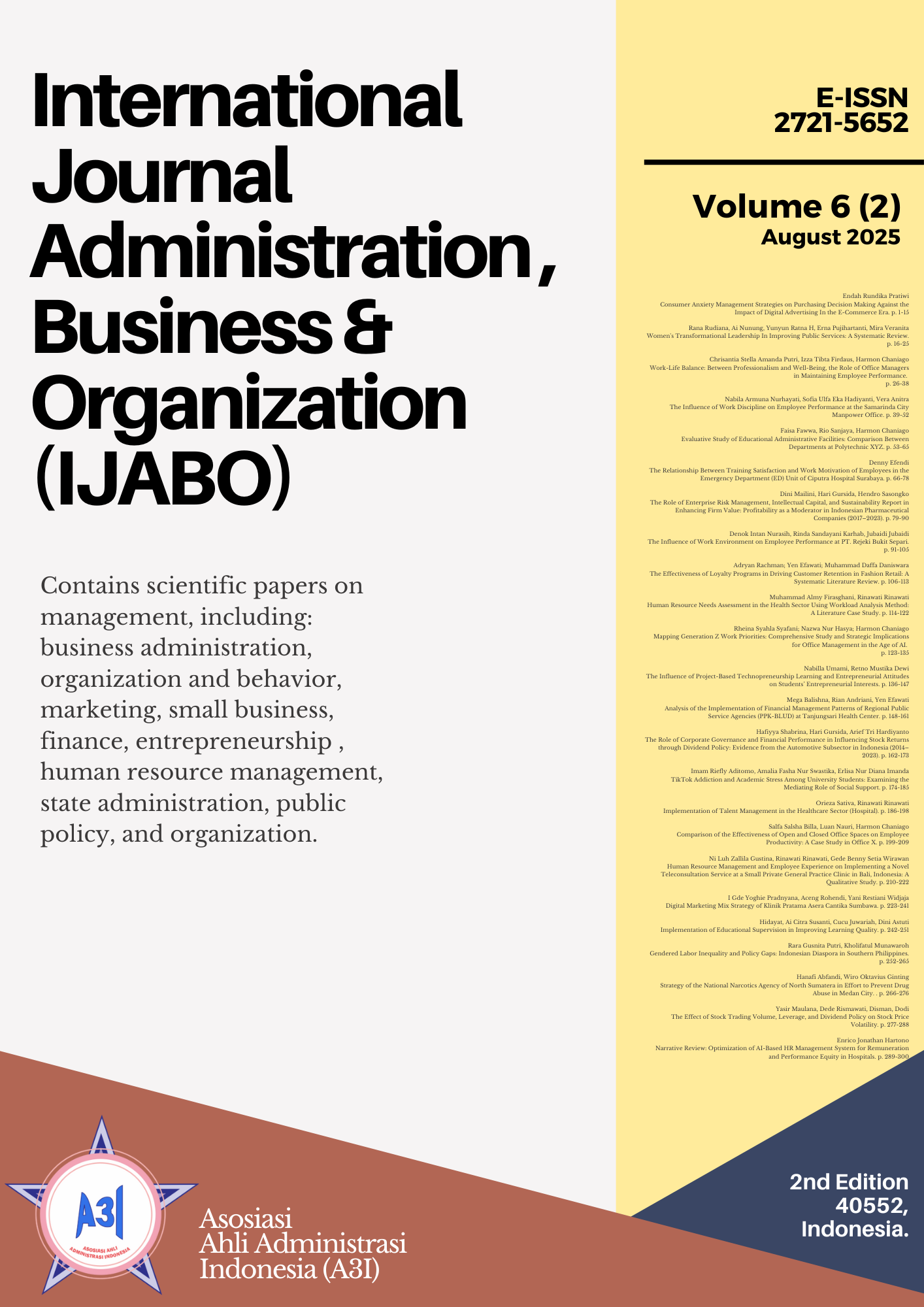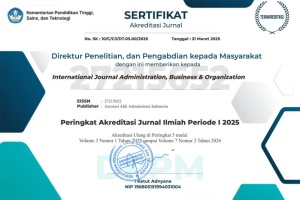Human Resource Needs Assessment in the Health Sector Using Workload Analysis Method: A Literature Case Study
Abstract
Human resource planning is a critical element of healthcare systems, as adequate staffing directly influences service delivery and patient outcomes. The research design employed in this study is a comprehensive literature review that focuses on assessing human resource needs in the health sector through the lens of workload analysis methodologies, particularly the Health Workload Analysis Method (ABK-Kes) and the Workload Indicators of Staffing Need (WISN). Evidence from recent studies demonstrates that workload-based approaches provide more accurate estimations of staffing requirements compared to conventional methods, thereby improving operational efficiency, enhancing service quality, and supporting strategic workforce planning. The integration of technology in human resource management further contributes to optimizing staff allocation and addressing workforce shortages. Overall, the findings underscore the importance of adopting robust analytical methods to strengthen evidence-based decision-making, promote sustainability, and provide actionable insights for policymakers and healthcare administrators in developing effective staffing strategies.
References
Astuti, S. (2018). The role of human resource management audit on the performance of inpatient installation employees at the hospital (A case study at Dr. Soedirman Regional General Hospital, Kebumen). Focus Bisnis: Media of Management and Accounting Studies, 17(1), 1–23.
Chrismawanti, M. (2020). A review of human resource needs in medical records based on the health workload analysis method (ABK-Kes) at Darmayu Ponorogo General Hospital. Jurnal Delima Harapan, 7(1).
Hulu, S. R. (2023). Analysis of the strategic plan for nursing human resources in Jakarta Region Hospitals. Indonesian Journal of Nursing Scientific, 3(1).
Purwanti, D. I., & team. (2023). Analysis of the calculation of human resource needs using the Workload Indicators of Staffing Need (WISN) method in the Central Sterile Supply Department (CSSD) installation of a private hospital. International Journal of Healthcare Research, 6(2).
Fauziah, S., & Mulyanti, D. (2023). Factors affecting the quality of human resources in relation to the Hospital Management Information System (SIMRS). MANABIS: Journal of Management and Business, 2(1), 27–36.
Pangkey, D. Y., & team. (2023). Strategies for managing human resources to enhance sustainable performance in Type C hospitals in East Jakarta. Journal of Management and Business, 2(1).
Agustina, S., & team. (2024). Analysis of the implementation of the Hospital Management Information System (SIMRS) on service quality at RS Mesuji Healthcare Center. Malahayati Nursing Journal, 6(8), 3148–3164.
Karim, S. A., & Islam, M. J. (2024). Navigating the Future of Healthcare HR: Agile Strategies for Overcoming Modern Challenges. arXiv preprint arXiv:2410.04246.
Tarhan, A., Garousi, V., Turetken, O., Söylemez, M., & Garossi, S. (2019). Dataset for paper: maturity assessment and maturity models in healthcare: a multivocal literature review.
Copyright (c) 2025 Muhammad Almy Firasghani, Rinawati Rinawati

This work is licensed under a Creative Commons Attribution-ShareAlike 4.0 International License.
Authors who publish in this journal agree to the following terms:
- The authors confirm that they are the authors of the submitted article, which will be published (online) in the journal IJABO (International Journal Administration, Business & Organization) by the Asosiasi Ahli Administrasi Indonesia (A3i), Bandung, Indonesia. The author’s name will be evident in the article. The publisher makes all decisions regarding the layout and distribution of the work.
- Authors guarantee that the work is their own original creation and does not infringe any statutory or common-law copyright or any proprietary right of any third party. In case of claims by third parties, authors commit themself to defend the interests of the publisher and shall cover any potential costs.
- Authors retain copyright and grant the journal the right of first publication, with the work simultaneously licensed under a Creative Commons Attribution-ShareAlike 4.0 International License (CC BY-SA 4.0). This license allows the redistribution and reuse of papers provided the authorship is properly credited.
- Authors can enter into separate, additional contractual arrangements for the non-exclusive distribution of the journal's published version of the work (e.g., posting it to an institutional repository or publishing it in a book), with an acknowledgment of its initial publication in this journal.
- Authors are permitted and encouraged to post their work online (e.g., in institutional repositories or on their website) prior to and during the submission process, as this can lead to productive exchanges and earlier and greater citations of published work.

















